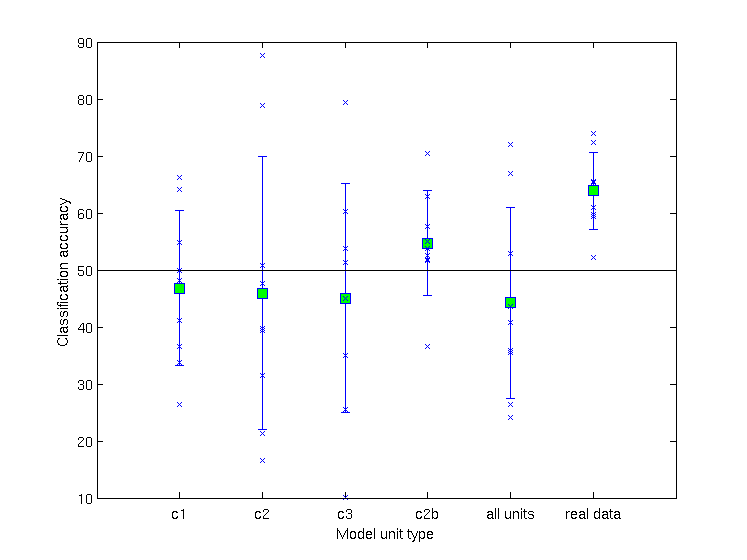Decoding category information from the Model units of Serre
et al., (2007)
To
test if the 'abstract' category information described in Figure 3 could
be accounting for by visual image properties of the images, we applied
the decoding methods to simulated neural responses created from the
Model units described in Serre et al., 2007. Decoding results
from training on images derived from 2 dog and 2 cat prototypes and
testing on the remaking cat and dog prototype (as was done in Fig. 3)
are shown below for several different Model types. The blue
x's
are the results from the 9 permutations of training and test prototype
splits, the green boxes are the mean from these 9 runs, and the error
bars are the standard deviations. The right most column
contains
results from decoding the ITC neural data using one 150ms bin staring
100ms after stimulus onset (i.e., 600-750ms into the trial, where
stimulus onset is at 500ms). As can be seen, the neural data
achieves a higher decoding performance than all the Model units types,
and perhaps more significantly, results from the decoding the
neural data are always above chance for all 9 permutations of the data.
These results suggest that the results reported in Figure 3
are
due to ITC having more 'abstract' category information that is not
directly inherent in the visual properties of the stimuli.

Home
